
One of the questions that many business owners, marketers and SEOs often wonder about is whether they should focus on long form content vs short form content. And whether their content marketing strategy should lean towards one over the other.
This article aims to provide a comparison between long form vs short form content, complete with real-world examples of each.
We'll highlight the unique advantages for both long form and short form content. And we'll also give you a few ideas on how to choose between the two.
What is Short Form Content?
Short form content is a concise and compact piece of content that can be consumed quickly by your audience. It typically contains 400-1200 words and is designed to provide information in a brief, digestible format.
The focus is on delivering a clear message using as few words as possible, making it an ideal choice for our fast-paced, information-overloaded digital world.
Short form content comes in a variety of types:
- Social media posts
- Short blog posts
- Emails
- Infographics
- News updates
- Paid ads
- Website pages (About us, Contact, etc.)
Short form content plays a crucial role in content marketing, helping businesses reach their audience more effectively. Its brevity and clarity can lead to higher engagement rates, making it a powerful tool in your marketing arsenal.
Example of Short Form Content
There are different types of short form content that you can create. Social posts often do really well as short form content since you don't want to write entire essays or blog articles on your social pages.
The idea is to capture the attention of your audience in order to either redirect them to a page on your website or to get on-platform interaction with followers.
Short form content is also a great avenue to add some humor and use less formal vocabulary in order to add some personality to your brand.
A great example of short form content is this post from Hubspot on their Facebook page.
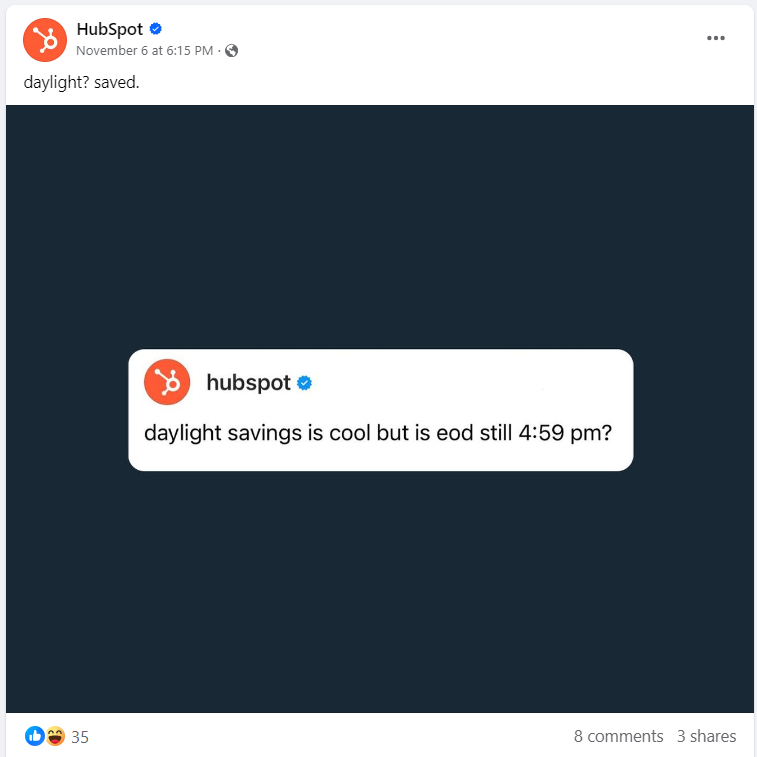
As you can see they are using simple infographic and a clever caption, incorporating humor into the post. The great thing about this post, is that it really engages with the audience and it likely just took 5 minutes to create.
What is Long Form Content?
Long form content refers to longer pieces of content that dive deeper into a topic, providing comprehensive and detailed information.
Typically, long form content is over 1,200 words, although the exact length can vary depending on the subject matter and the intended audience.
The main objective of long form content is not just to provide a quick answer or overview, but to explore a topic in-depth. This includes providing background information, discussing various aspects of the topic, presenting different viewpoints, showcasing detailed research findings, and offering actionable insights.
While long form content requires a significant investment of time and resources to create, it can deliver substantial benefits in terms of SEO, audience engagement, and lead generation.
It's a valuable tool for businesses aiming to establish authority in their industry and build long-term relationships with their audience.
Example of Long Form Content
Examples of long form content include white papers, e-books, case studies, comprehensive guides, research reports, and lengthy blog articles like pillar posts.
These types of content are often used for thought leadership, demonstrating expertise, and building credibility in a specific field.
An excellent example of long form content is this guide from WebsiteBuilderExpert on the best website builders.
This 10,600 word blog article goes into detail on all things related to website builders including reviews of the most popular website builders, which website builders to avoid, how to pick the best website builder for your website, and a bunch of FAQs on the subject.
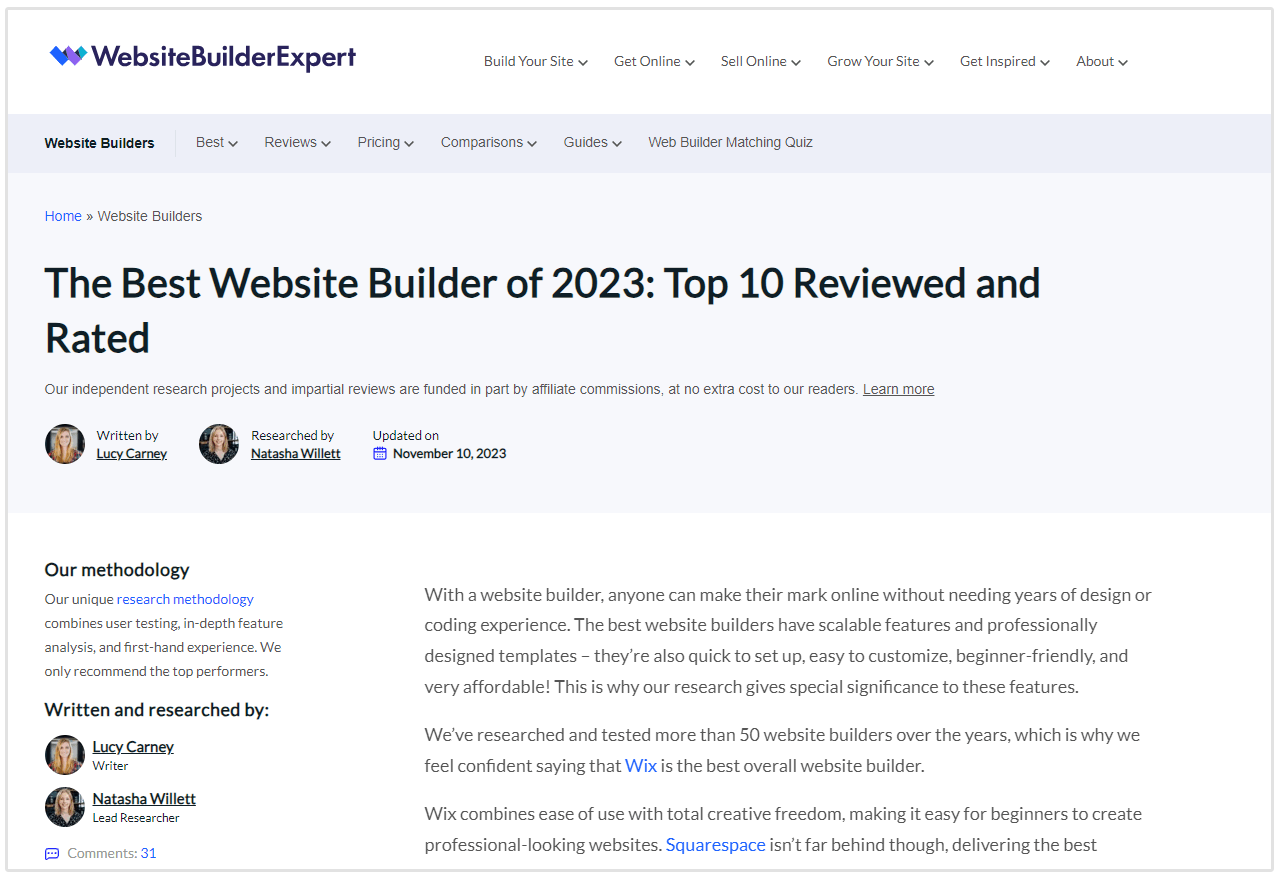
As mentioned, long form content does take a lot more time and research to create, especially if you want to create something that you can be proud of. However, the results are well worth the effort. Taking the example of WebsiteBuilderExpert's guide on the best website builders, you can see this page is ranking for a number of popular keywords.
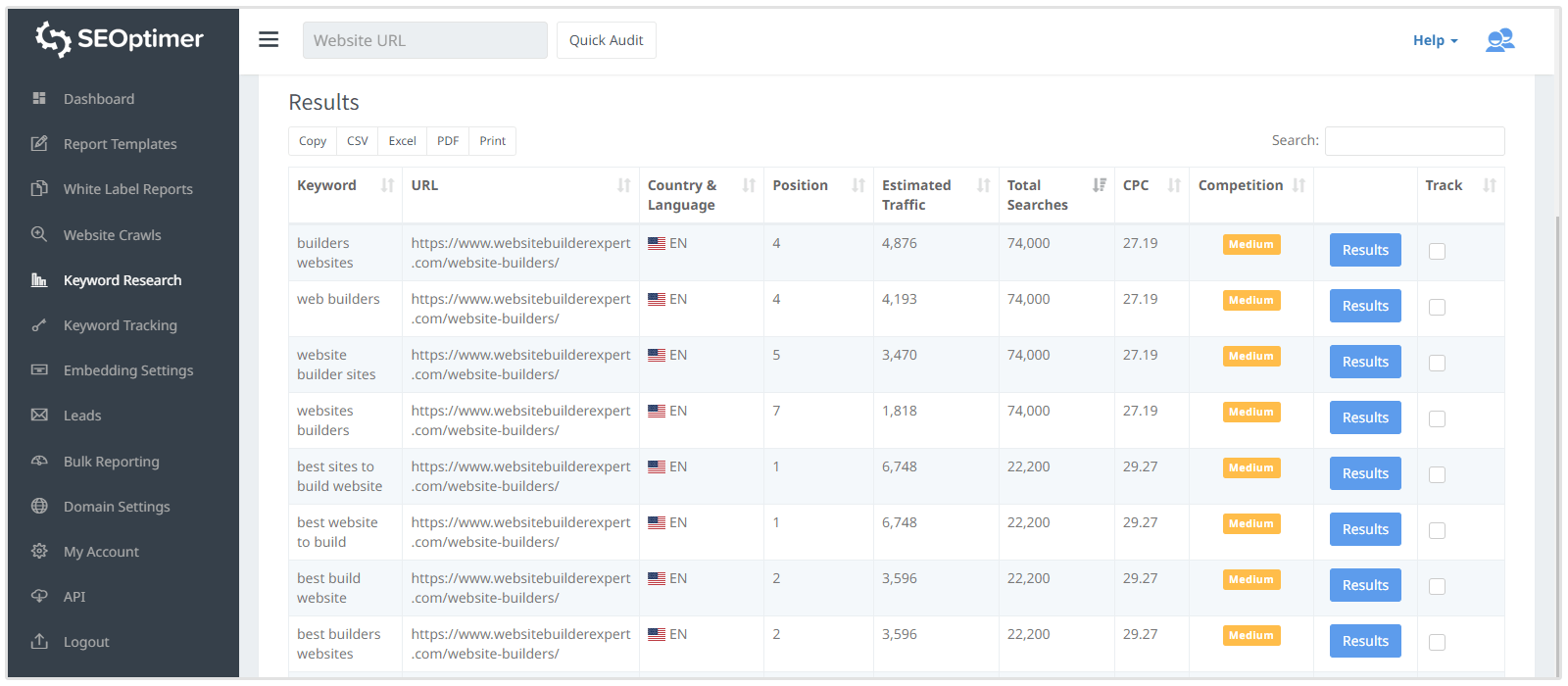
Here's another example of long form content from the SEOptimer blog. We created an in-depth article on the topic of 13 Ways to Get SEO Leads. This article spans more than 5,500 words in length and aims to educate the reader on different ways they can generate SEO leads.
Let me tell you, this article took a lot of time, research, and effort to create. Not only did we add a bunch of information in there, we also contacted several digital agency founders to give us some insights on how they generate SEO leads for their agencies.
The result? As of today, our article is ranking on the first page of Google for several high volume keywords and the target keyword.

Does Content Length Matter?
From an SEO perspective, content length can indeed play an important role. Search engines, like Google, aim to provide users with the most relevant and comprehensive answers to their queries. Long-form content, with its in-depth exploration of topics, tends to align well with this goal.
We should also note, that content length doesn't have a direct impact on SEO rankings, neither is it a ranking factor.
However, research suggests that long-form content often ranks higher in search engine results.
A study by Backlinko found that the average Google first page result contains 1,447 words. This is likely because longer content has more scope for keyword inclusion, internal linking, and providing comprehensive information on a topic - all factors that Google considers.
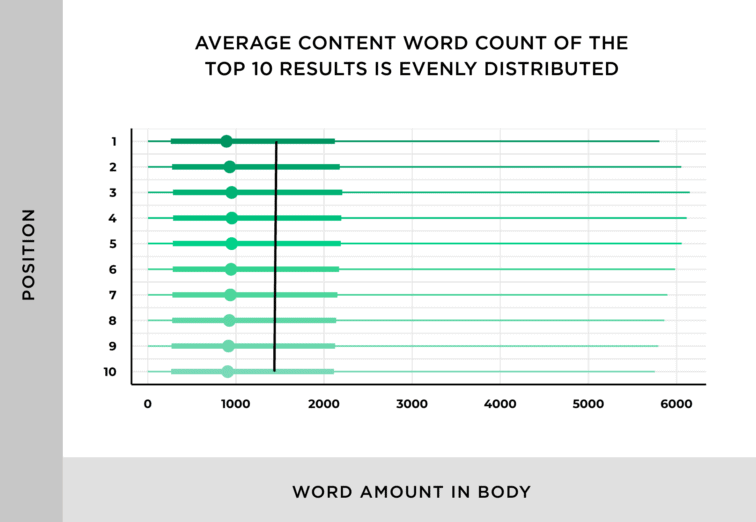
Image source: Backlinko
However, it's important to note that quality should never be sacrificed for quantity.
Search engines prioritize content that provides value to readers, regardless of length. So while longer posts might have an advantage, shorter posts that are well-written, informative, and engaging can also perform well in the SERPs.
How to Choose Between Long Form vs Short Form Content
When it comes to choosing between long form and short form content, there are several key factors to consider.
Your decision should be influenced not just by your personal preferences, but also by your audience's needs, the intent behind your content, competition in your industry, and the nature of the topic. Let's delve deeper into each of these aspects.
1. Understanding Your Audience
The first step is to understand who your readers are and what they prefer. Are they busy professionals looking for quick insights, or do they prefer detailed, in-depth analysis?
Consider conducting surveys or analyzing your website analytics to gain insights into your audience's reading habits. Remember, the ultimate goal is to cater to your readers' needs and preferences.
2. Determining the Intent
What do you aim to achieve with your content? If you're looking to provide a brief overview or a quick update, short form content can be the way to go.
For instance, product feature updates are ideal for short form blog articles, social posts, and email newsletters since you're not trying to teach the reader something, you just want to share a brief overview of new features.
Here's a great example of a a product announcement from Intercom.
This 900 word blog post sums up one of Intercom's newest features, Workflows. The obvious intent behind this is to give the reader clarity on what the feature is about and how it will help them.
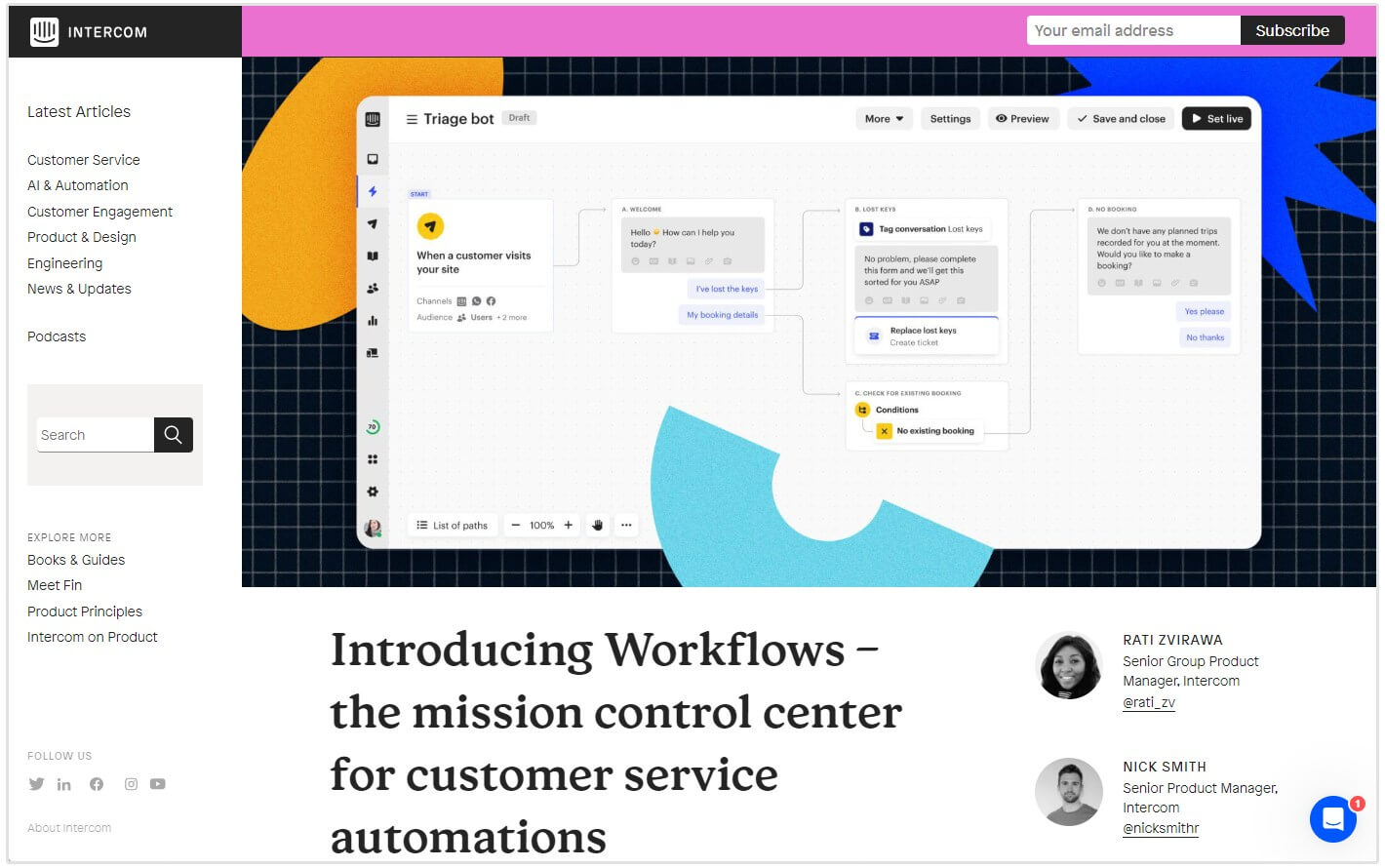
However, if your goal is to educate your audience about a complex topic, or to establish thought leadership, long form content may serve you better.
Let's look at another example from Intercom on how search intent determines whether you should use long form vs short form content.
The page in question is their blog post on "customer acquisition costs", of course, if someone searches for this in Google, they are likely looking for information on what customer acquisition costs are, why it's important, and how to calculate these costs.
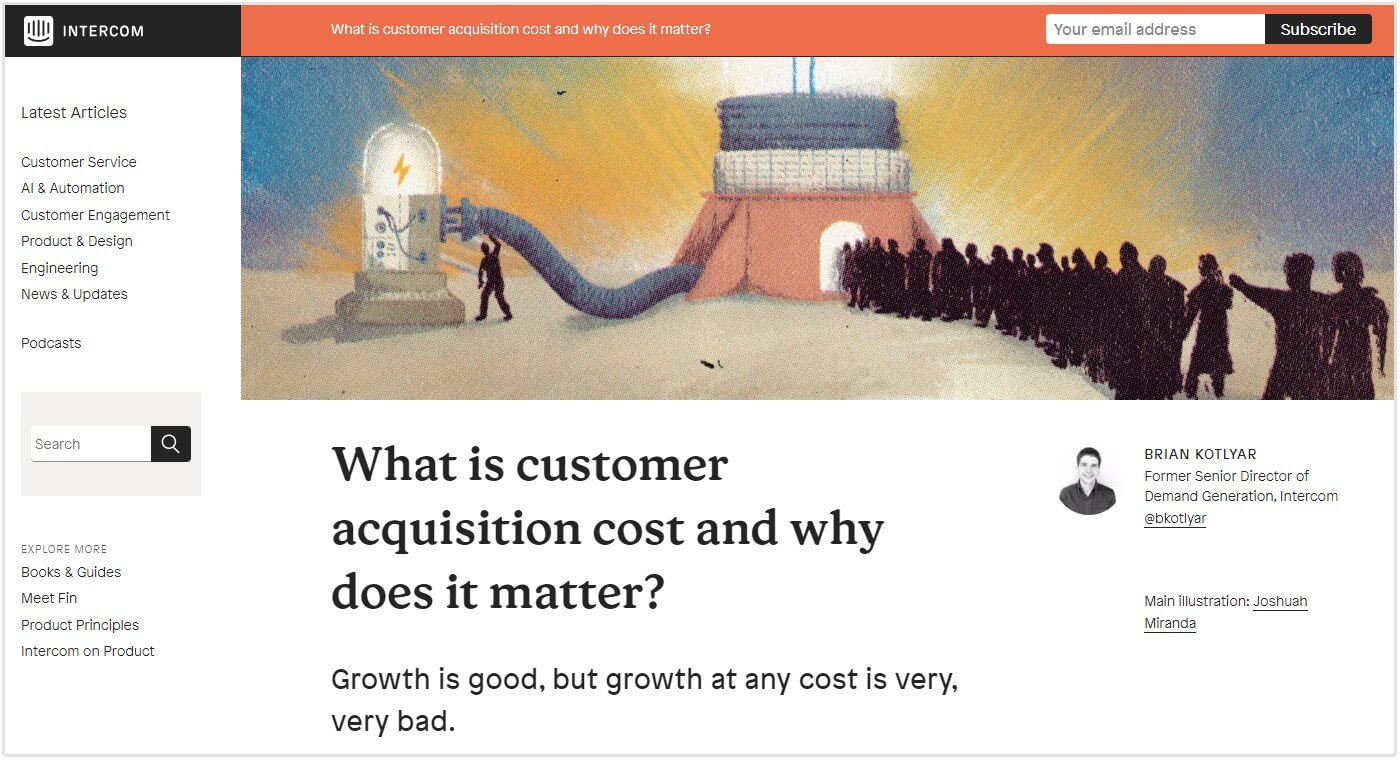
Such an article will likely fall under the category of long form content since it requires a detailed breakdown on the different areas of customer acquisition costs.
3. Analyzing the Competition
Take a look at what your competitors are doing. Are they focusing on short blogs or comprehensive guides?
Analyzing their content strategy can provide valuable insights and help you identify gaps that you can fill with your own content.
4. Considering the Nature of the Topic or Page
Some topics naturally lend themselves to long form content, while others can be effectively covered in a short piece.
For instance, a technical tutorial or an industry report would require a detailed, long form approach.
On the other hand, a company announcement or a product update might be best suited to a concise, short form format.
For instance, if you're creating a website launch announcement, you don't need to write a lengthy post just to tell readers and subscribers of the latest features of your newly designed site.
Choosing between long form and short form content isn't about deciding which is better overall — it's about determining which is the best fit for your specific situation.
By taking into account your audience, intent, competition, and the nature of the topic, you can make an informed decision that will help your content resonate with your readers and achieve your business goals.
Pros of Short Form Content
Short form content, while concise, carries a host of advantages that can greatly benefit your content marketing strategy. Here are some key benefits:
Efficiency
One of the primary benefits is its efficiency. Short form content gets straight to the point, delivering your message quickly and succinctly. This makes it ideal for busy audiences who prefer quick, digestible reads.
Versatility
Short form content is highly versatile. It's perfect for social media posts, email newsletters, and more. Its adaptability allows you to reach your audience on various platforms effectively, without having to spend to much time changing the content.
Compared to long form content, short form content is much easier to repurpose for use on other platforms or content formats.
Engagement
Short form content often generates high engagement rates. A snappy headline or compelling tweet can capture your audience's attention and prompt immediate reactions, whether it's a like, share, or comment.
Mobile-Friendly
With the increasing use of mobile devices, short form content has become even more valuable. It's easy to read on smaller screens, giving mobile users a better user experience.
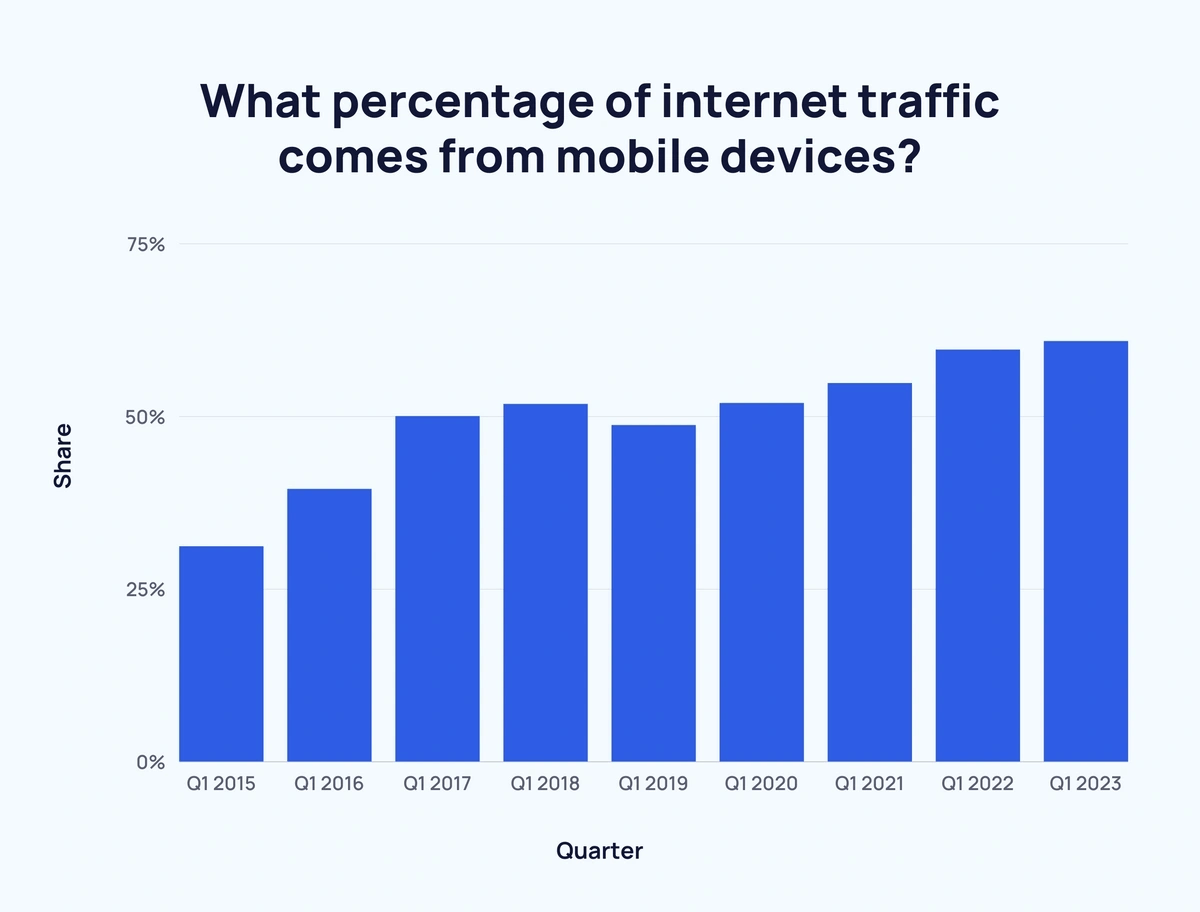
Note: I'm not suggesting that long form content can't be user friendly on mobile devices. However, to keep users on your page, you'll need to break long form content into sections by using headers, images, or videos. Whereas short form content is more easily consumable on mobile devices.
Action-Oriented
If you're looking to drive immediate action, such as a product purchase or newsletter sign-up, short form content can deliver your call-to-action powerfully and persuasively.
Time and Cost Efficient
Short form content typically requires less time and resources to create compared to long-form content. This makes it a cost-effective choice for businesses, especially those with limited resources or tight budgets.
Pros of Long Form Content
Long form content, while demanding more time and effort from both the creator and the reader, brings a wealth of benefits to the table. Here's why it's an essential part of any robust content strategy:
Lead Generation Potential
High-value long form content, such as ebooks and webinars, can be an excellent tool for inbound lead generation.
Offering such valuable content in exchange for contact details can encourage sign-ups and conversions.
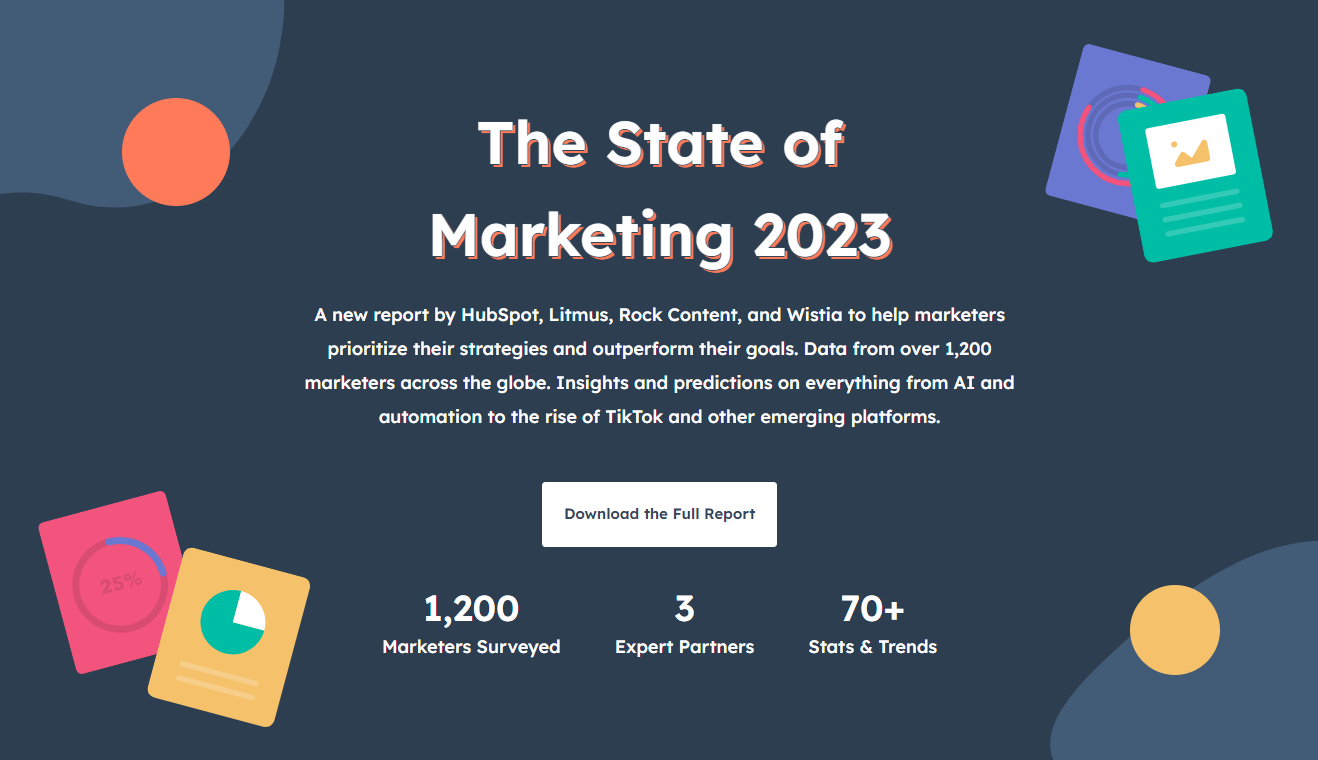
Comprehensive Coverage
Long form content allows you to dive deep into complex topics, offering your readers a complete and thorough understanding. This comprehensive coverage can make your content a go-to resource in your industry.
Authority Building
Detailed, well-researched content can help establish your brand as an industry leader. By showcasing your expertise and knowledge, you not only educate your audience but also build credibility.
SEO Benefits
Long form content is often favoured by search engines due to its potential to provide extensive information on a topic. This can help improve your search rankings, making your content more discoverable.
Building Trust
By consistently providing insightful and valuable long form content, you can build a strong relationship with your audience, fostering trust and loyalty.
For instance, Neil Patel publishes lengthy blog articles about SEO and digital marketing on his website. Through the years, he's been able to build a reputation for himself as a leading thought leader because of the value he delivers in each one of his blog articles.
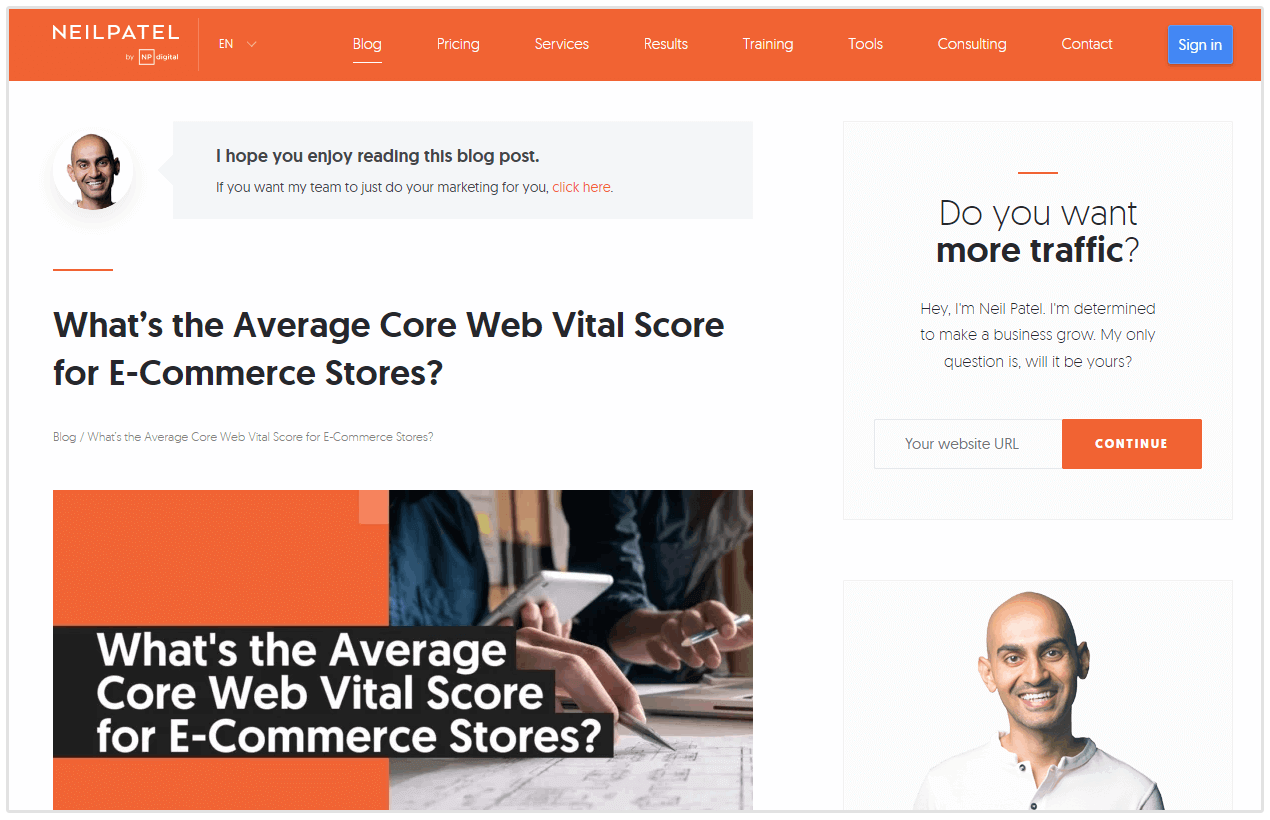
Increased Engagement
Long form content provides ample opportunities for readers to engage - be it through comments, shares, lower bounce rates, or just time spent on page. This increased engagement can enhance your online presence and SEO metrics.
Conclusion
Both short form and long form content hold their unique value and advantages.
Short form content shines in its ability to deliver quick, easily digestible information, making it ideal for busy readers on the go.
On the other hand, long form content stands out with its comprehensive coverage and depth, offering a detailed exploration of the subject matter that not only educates but also positions your brand as an authority in the field.
However, it's crucial to remember that one size does not fit all.
The choice between short form and long form content should be driven by your specific goals, audience preferences, and the nature of the topic at hand. A balanced content strategy that effectively leverages both short and long form content can help you reach a wider audience, cater to diverse reader needs, and ultimately, drive better results for your business.










